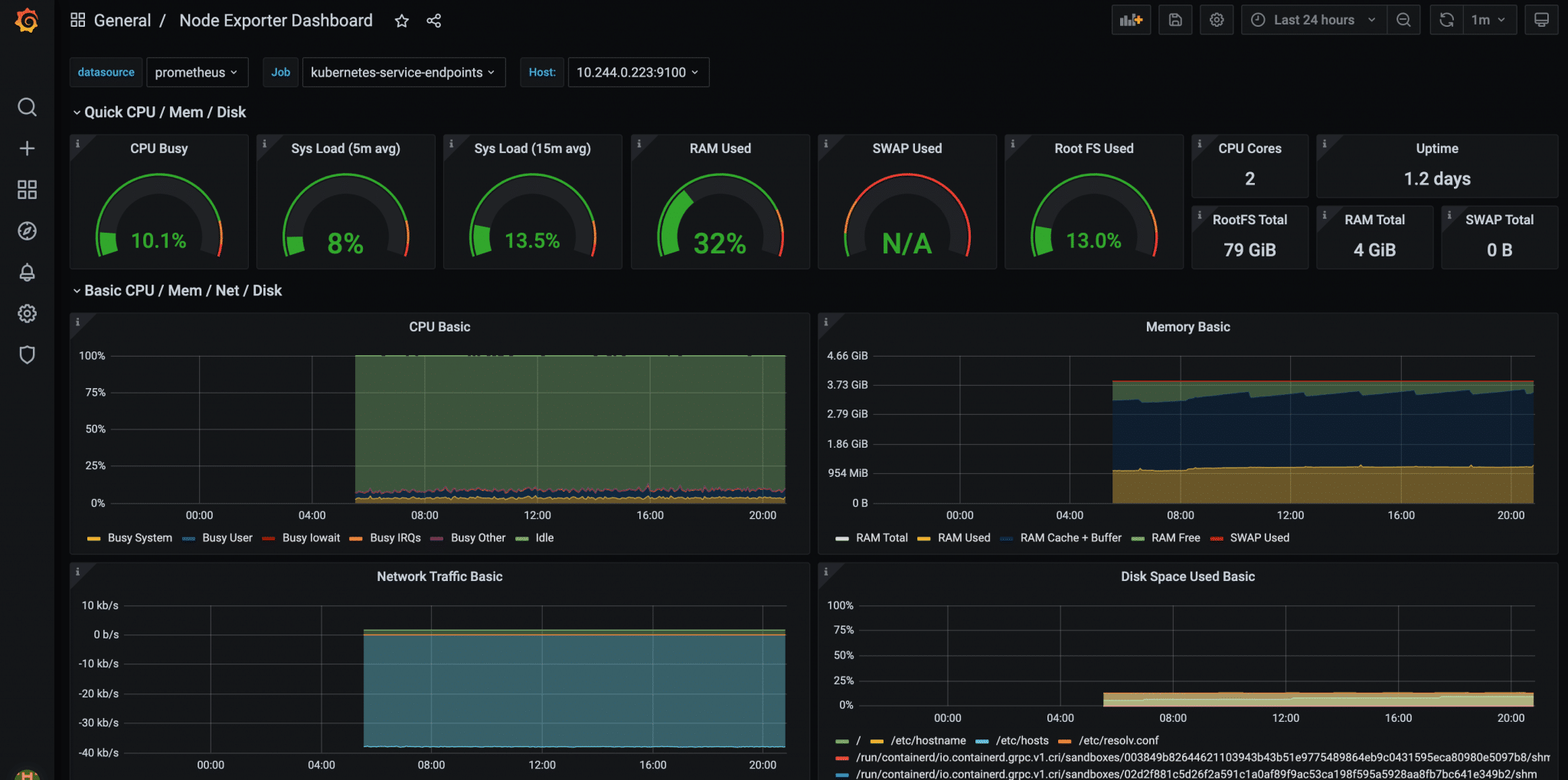

#NODE EXPORTER SERIES#
Time Series Database (TSDB): Prometheus is a Time Series Database which can track, monitor, and aggregate metrics over time.Issue trackers and Continuous Integration: Bitbucket, Confluence, Jenkins, JIRA, etc.APIs: Docker, Azure, AWS, GitHub, Google, etc.Storage: NetApp, Hadoop, Pure Storage, Tivoli, etc.Database: MySQL, MS SQL, CouchDB, MongoDB, Oracle, etc.Hardware: Netgear, Windows, IBM Z, etc.Examples of these integrations are listed below. There are several third-party integrations that allow database, hardware, storage, web, messaging, network, monitoring, logging, and CI/CD metrics to be exported as Prometheus metrics. Node Exporter: The exporter exposes the metrics via the user interface (UI) and aggregates them in the system’s preferred format.It triggers alerts based on defined conditions. It uses a unique query language to aggregate results in real-time. It stores data in its integrated local on-disk time series database. Prometheus Server: The server is used to configure the data collection specifics via collectors from pods and nodes using a scrape configuration file.Collectors: Various types of collectors can be enabled to gather the statistics from nodes, containers, and pods.Nodes: Servers or devices in a larger system that are capable of either sending, receiving, or forwarding information to another member of the system.The statistics which are detailed in the table below are used to monitor system performance to avoid slow-down, outages, and troubleshoot node-level issues. It can also collect and record labels, which are optional key-value pairs. It can collect and store node-level metrics as time-series data, recording information with a timestamp. The Prometheus Node Exporter is an open-source time-series monitoring and alerting system for cloud-native environments, including Kubernetes, hosted by the Cloud Native Computing Foundation (CNCF) on GitHub.

Prometheus is a popular monitoring tool that uses the pull-based approach to gather metrics from hosts and applications at regular intervals. Many cloud service providers have compromised by providing application programming interfaces (APIs) that can be used to gather data on the health, behavior, and performance of applications and their infrastructure. So what options are an organization left with?
#NODE EXPORTER INSTALL#
Most cloud providers do not allow you to install your own agents, monitors, or probes on their systems to find out what is going on with their services. Troubleshooting cloud applications has made security, application performance monitoring (APM), and DevOps impossible to manage.


 0 kommentar(er)
0 kommentar(er)
